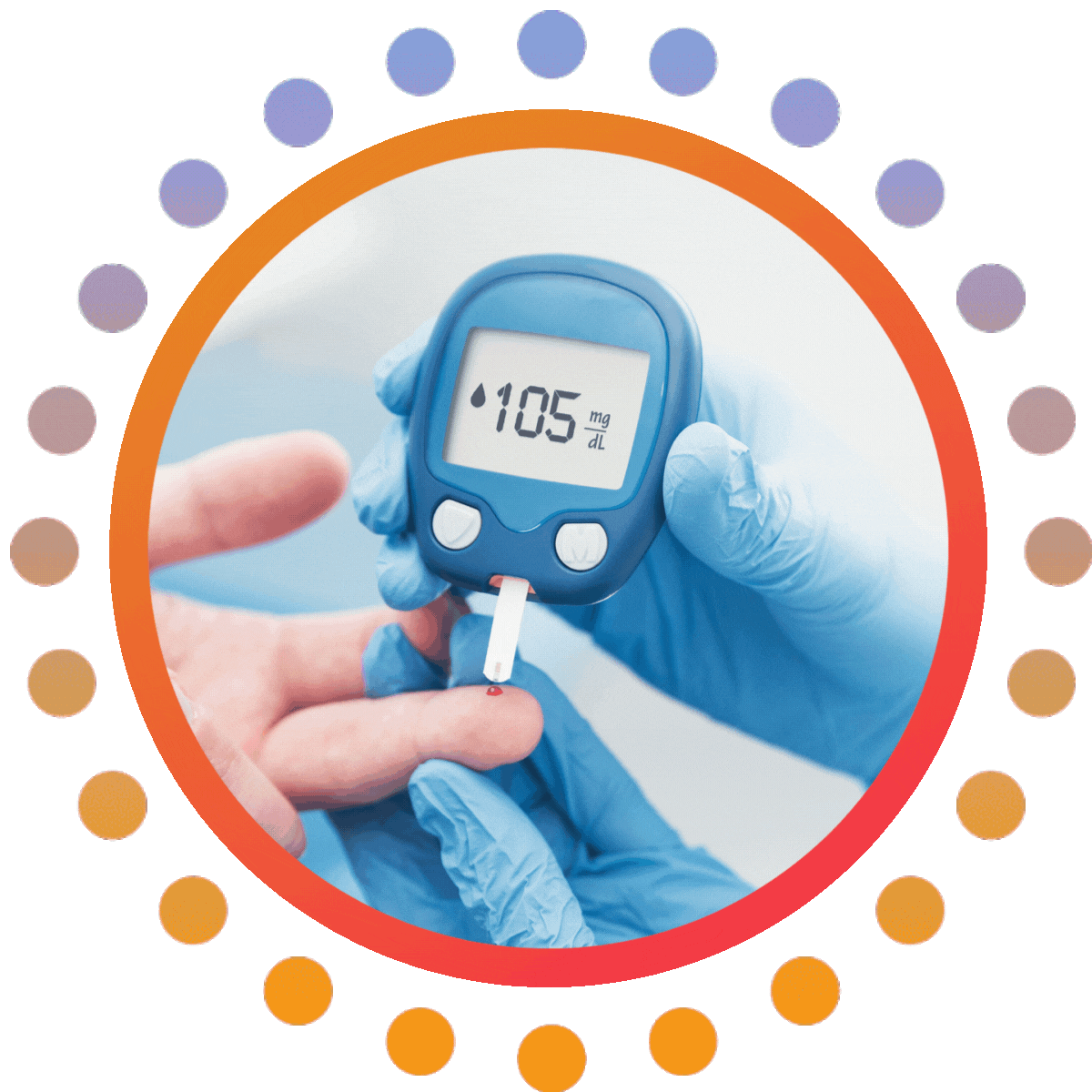
Web Stories
Step Into the Story: Explore Now
Introduction
Diabetes Mellitus (DM) is a global health problem, a complicated metabolic disruption that affects millions. The disease affects several body systems and overall quality of life, and symptoms include fatigue, excess frequency of urination, and vision complications. Failure to control diabetes can lead to cardiovascular diseases, kidney dysfunction, and neurodegenerative disorders.
Ayurveda considers DM as a lifestyle imbalance, which has to be tackled properly to avoid complications. The management strategy seeks to address root causes through personalised nutrition, lifestyle changes, and therapeutic interventions.
In this blog, we will understand how Ayurveda can help diabetes management shift from a reactive to a proactive journey of healing and prevention and even reverse metabolic imbalances and bring back health naturally.

Ayurveda Treatment for Diabetics
According to Ayurveda, diabetes is considered Madhumeha, caused by imbalances in the body’s basic energies (tridosha, especially Kapha and Vata). The prodromal symptom of diabetes is excessive urination (Prachura Meha). The treatment in Ayurveda is aimed at reducing the symptoms along with balancing the doshas responsible for it. Panchakarma therapies, stress management, diet and lifestyle modification, and internal medicines are prescribed to bring the body’s metabolism back to balance, prevent further complications, delay progression, and improve overall quality of life.
Dietary Modifications for Diabetics
Do’s
The following Ayurvedic home remedies for diabetic patients help improve metabolism, arrest disease progression, and prevent complications.
- Jamun, gooseberry, pomegranate, etc. fruits can be consumed, which are proven to maintain blood sugar levels.
- Flax seeds, methi seeds, and coriander seeds are also beneficial.
- Barley, wheat, and millet have lower glycaemic indices, thus being beneficial for diabetic patients.
- Bengal gram, green gram, and horse gram, which are high in fibre and protein, are beneficial.
- Bitter gourd, fenugreek, pointed gourd, garlic, drumsticks, lady’s finger, and raw banana are low in carbohydrates and help in regulating blood sugar levels and can be incorporated
- Other spices, such as cumin, pepper, turmeric, and ginger, which enhance metabolism and digestion, are also advantageous.
Don’ts’
Certain foods and beverages can lead to sugar level increases, lethargy, and malnourishment in diabetic patients due to their low nutrient content and high glycaemic index. A few are listed below:
- Refined flour or maida-based foods like bread, pasta, and pizza are low in nutrients and can cause blood sugar to rise.
- Fried foods, processed snacks, fatty meats, and high-fat foods can lead to slow metabolism and high sugar levels in the blood and may lead to cardiovascular problems.
- Full-fat dairy products such as milk, cheese, paneer, etc., are heavy to digest and can lead to cardiac issues.
- Consumption of too-salty foods like canned meat and carbonated drinks can lead to hypertension and other complications.

Lifestyle Modifications
Diabetic patients can considerably improve their quality of life and blood glucose levels with certain lifestyle modifications. Those are-
- Yoga and Meditation: Meditation and other calming therapies can lower stress, which in turn can regulate blood sugar levels. Important yoga postures like Surya Namaskara, Bhujangasana, Dhanurasana, and Shavasana are beneficial. Diabetics with severe retinopathy, neuropathy, cardiovascular problems, hypoglycemia, or pregnant women better avoid these asanas. Always consult a trained yoga practitioner before adopting these in your routine.
- Regular Exercise: Walking and muscle-strengthening exercises can improve digestion and glucose metabolism. It will aid in losing weight and improving your heart health.
- Reduce Weight: Try to achieve slow and sustainable weight management. Make diet modifications and practice regular physical activity. Weight management allows easy processing of glucose by reducing the workload on insulin. It helps reduce body fat, better control blood sugar, and reduce the risk of diabetes-related complications.
- Proper Sleep Cycle: Keep to a sleep schedule, try to have a routine early sleep, and get a minimum of 7 quality hours of sleep. This practice will keep hormones in balance, improve glucose metabolism, and maintain whole endocrine function.
- Regular Meal Timing: Maintaining a regular meal time and not skipping meals help in the proper regulation of metabolism and reduce the glucose level fluctuation in the body.
- Hydration: Drinking 1-2 L of water a day and watching urine colour as a hydration indicator is essential. Proper hydration helps keep our blood cells healthy and fine-tune the metabolism. It also helps flush excess sugar through urine and keep you hydrated.
Integrative Approach for Diabetes Treatment
Apollo AyurVAID’s evidence-based diabetes treatment protocol addresses the root cause of blood sugar imbalances and their complications. It includes a complete health assessment using the Diabetes Screening Questionnaire, in-depth evaluations, blood tests, individualised treatment plans including panchakarma treatments, end-to-end diabetes care by expert Ayurveda physicians and therapists, and careful management of medications including oral hypoglycemics, insulin, and co-morbidity treatments with gradual reduction as glycaemic control improves.
Ayurvedic Herbs for Sugar Control
Ayurveda provides an effective solution for constipation. The treatment aims at correcting the metabolism through dietary changes, lifestyle modification along with internal medicines and Panchakarma therapies after assessing the condition of the patient and severity. These modalities aid in cleansing and rejuvenating the digestive system including the colon for good health. For the treatment of constipation, and GI Cleansing therapies such as Abhyanga (Ayurvedic Oil massage), Swedana (steam therapy), Avagaha Swedana (warm water or medicated kashaya sitz bath), Virechana (purgation therapy) and Basti (enema therapy) can be adopted depending on the condition of the patient and severity. These therapies are administered after proper assessment by the qualified physicians.
Conclusion
The focus of Ayurveda with regards to diabetes management is more comprehensive and aims at whole-person care. We provide personalised nutrition and lifestyle modification to address metabolic imbalances. Dietary choices, yoga, meditation, exercise, and herbal supplements are all important strategies. Thus Ayurveda is a path of conscious living with self-awareness, helping people to take charge of their metabolic health and diabetes in particular for a better quality of life.
REFERENCES
- Singh, N, Dasar, D (2024). Harnessing the Power of Ayurveda for Diabetes Management: A Narrative Review. JOURNAL OF CLINICAL AND DIAGNOSTIC RESEARCH. https://doi.org/10.7860/jcdr/2024/70617.19479
- Jain, A, Mishra, S (2024). Anti-Diabetic Herbo-Mineral Drugs From Priya Nighantu. AYUSHDHARA. https://doi.org/10.47070/ayushdhara.v11i2.1535
- Chauhan, A et al. (2017). Ayurvedic approaches used in prevention and treatment of type 2 diabetes mellitus. JOURNAL OF CONVENTIONAL KNOWLEDGE AND HOLISTIC HEALTH. https://doi.org/10.53517/jckhh.2581-3331.112017172
- Sharma, R et al. (2015). Efficacy of Ayurvedic remedies in type 2 diabetes: A review through works done at Gujarat Ayurved University, Jamnagar. Journal of Medical Nutrition and Nutraceuticals, 4, 63. https://doi.org/10.4103/2278-019X.151812
- Singh, J et al. (2019). Nutritional Interventions and Considerations for the development of low calorie or sugar free foods. Current diabetes reviews. https://doi.org/10.2174/1573399815666190807144422
- Phanich, M et al. (2010). Food Recommendation System Using Clustering Analysis for Diabetic Patients. 2010 International Conference on Information Science and Applications, 1-8. https://doi.org/10.1109/ICISA.2010.5480416
- Ko, G et al. (2017). Dietary Approaches in the Management of Diabetic Patients with Kidney Disease. Nutrients, 9. https://doi.org/10.3390/nu9080824
- Sharma, P, Patel, A (2024). INTEGRATING AYURVEDIC DIETARY RECOMMENDATIONS WITH MODERN NUTRITIONAL SCIENCE: EVIDENCE-BASED VALIDATION FOR DIABETES MANAGEMENT. INDIAN JOURNAL OF APPLIED RESEARCH. https://doi.org/10.36106/ijar/9800668
- Gordon, A B et al. (2019). Use of Ayurveda in the Treatment of Type 2 Diabetes Mellitus. Global Advances in Health and Medicine, 8. https://doi.org/10.1177/2164956119861094
- Sharma, R, Pk, P (2014). Diet and Lifestyle Guidelines for Diabetes: Evidence Based Ayurvedic Perspective. Romanian Journal of Diabetes Nutrition and Metabolic Diseases, 21, 335 – 346. https://doi.org/10.2478/rjdnmd-2014-0041
- Kumari, S et al. (2024). Efficacy of Integrated Ayurveda Treatment in Type 2 Diabetes mellitus with special reference to Prameha: A Randomised controlled Trial. International Journal of Ayurvedic Medicine. https://doi.org/10.47552/ijam.v15i1.4334
- Zhu, R et al. (2019). Acute Effects of Three Cooked Non-Cereal Starchy Foods on Postprandial Glycemic Responses and in Vitro Carbohydrate Digestion in Comparison with Whole Grains: A Randomized Trial. Nutrients, 11. https://doi.org/10.3390/nu11030634
- He, R et al. (2024). Research progress on low-glycemic index foods and their potential utilization value. SCIENTIA SINICA Vitae. https://doi.org/10.1360/ssv-2024-0110
- Brand, J et al. (1991). Low-Glycemic Index Foods Improve Long-Term Glycemic Control in NIDDM. Diabetes Care, 14, 101 – 95. https://doi.org/10.2337/diacare.14.2.95
- Gitanjali, D, Singh, D V (2020). Development and nutritional evaluation of low glycemic index recipe from ragi and pulses for diabetes. International Journal of Chemical Studies. https://doi.org/10.22271/chemi.2020.v8.i2ap.9165
- V.P., A A et al. (2024). Unlocking the Potential: Millets and Their Impact on Diabetes Management. Cureus, 16. https://doi.org/10.7759/cureus.59283
- Sriwahyuni, S et al. (2023). The Effectiveness of Yoga Exercise to Reduce Blood Sugar Levels in Diabetes Mellitus Sufferers. International Journal of Nursing Information. https://doi.org/10.58418/ijni.v2i2.44
- DiNardo, M M (2009). Mind-Body Therapies in Diabetes Management. Diabetes Spectrum, 22, 30-34. https://doi.org/10.2337/DIASPECT.22.1.30
- Thind, H et al. (2018). Yoga as a Complementary Therapy for Adults with Type 2 Diabetes: Design and Rationale of the Healthy, Active, and in Control (HA1C) Study. International journal of yoga therapy, 28(1), 123-132. https://doi.org/10.17761/2018-00026
- Locke, A et al. (2018). Diets for Health: Goals and Guidelines. American family physician, 97(11), 721-728. https://pubmed.ncbi.nlm.nih.gov/30215930
- Tiwari, P et al. (2014). Phytochemical and Pharmacological Properties of Gymnema sylvestre: An Important Medicinal Plant. BioMed Research International, 2014. https://doi.org/10.1155/2014/830285
- Azimi, P et al. (2014). Effects of Cinnamon, Cardamom, Saffron, and Ginger Consumption on Markers of Glycemic Control, Lipid Profile, Oxidative Stress, and Inflammation in Type 2 Diabetes Patients. The review of diabetic studies : RDS, 11(3-4), 258-66. https://doi.org/10.1900/RDS.2014.11.258
- Shekelle, P et al. (2005). Are Ayurvedic herbs for diabetes effective? The Journal of family practice, 54(10), 876-86. https://pubmed.ncbi.nlm.nih.gov/16202376
- Tyagi, K et al. (2024). Medicinal Plants Approach for Diabetes Mellitus-A Computational Model. International Journal of Experimental Research and Review. https://doi.org/10.52756/ijerr.2024.v44spl.006
- Samajdar, S, Samanta, M K (2022). MANAGEMENT OF DIABETES MELLITUS WITH TRADITIONAL AYURVEDIC HERBS: A REVIEW. Journal of Advanced Scientific Research. https://doi.org/10.55218/jasr.202213702
- Vishwakarma, P K et al. (2024). “Diabetes Management: Herbal Remedies and Emerging Therapies. Current Nutraceuticals. https://doi.org/10.2174/0126659786283493240415155919






